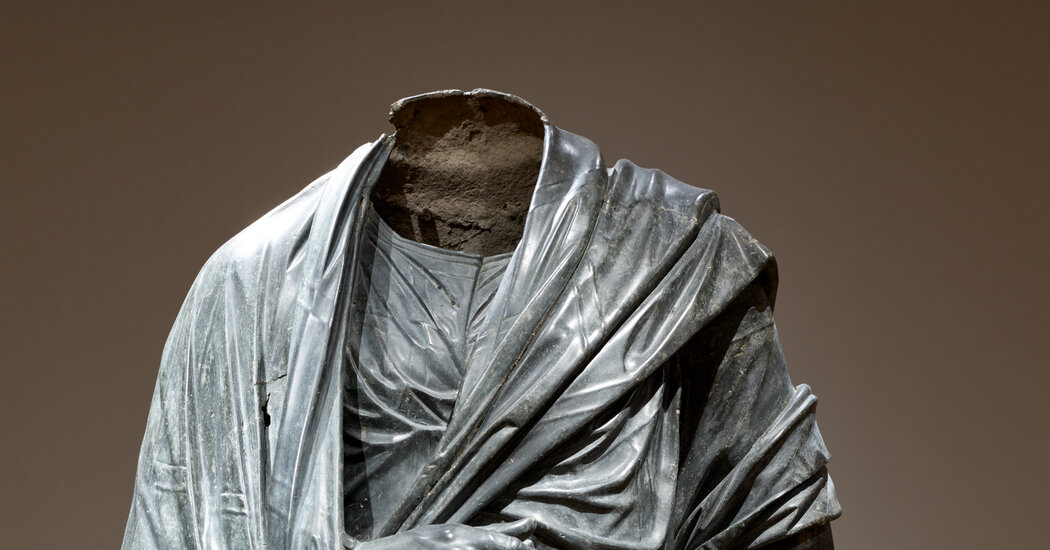With its flowing robes and stoic posture, the larger-than-life bronze statue believed to represent the great Roman statesman Marcus Aurelius had, since 1986, held pride of place in the Greek and Roman galleries at the Cleveland Museum of Art.
Now the statue is off display, seized under a warrant earlier this month by the Manhattan district attorney’s office. The office said on Thursday that the seizure was related to an “ongoing criminal investigation into a smuggling network involving antiquities looted from Turkey and trafficked through Manhattan.”
In their warrant, investigators put the value of the statue, which is headless, at $20 million, and said it was about 1,800 years old. They said it would be transported to New York in September.
According to the district attorney’s Antiquities Trafficking Unit, the accused traffickers were based in New York, giving the unit legal authority to seize the statue from another state because New York was the “focal point of the conspiracy.” Officials would not elaborate on the case.
Turkish officials said they have been telling the Cleveland museum that the statue, which is 6 feet 4 inches tall without its head, had been stolen in the 1960s during a looting spree at an archaeological site in Bubon, in southwestern Turkey. The officials said the museum had fended off their claims, saying Turkey could proe no hard eence of theft.
Zeynep Boz, the head of the Department for Combating Illicit Trafficking at Turkey’s Ministry of Culture and Tourism, said in a statement that “the enduring dispute surrounding this matter has kept Marcus Aurelius separated from his hometown for far too long.”
In a statement, the Cleveland museum said its policy is not to publicly discuss “whether a claim has even been made,” but that it “takes provenance issues very seriously and reviews claims to objects in the collection carefully and responsibly.”
In the past year, as part of its investigation into the Turkish looting claims, the antiquities unit has seized artifacts at the Metropolitan Museum of Art; the Museum of Greek, Etruscan, and Roman Art at Fordham University; and the Worcester Art Museum in Massachusetts.
The seized works include stone and bronze statuary dating back to an era when Turkey was a part of the Roman Empire in a region known as Anatolia or Asia Minor. The unit’s most recent seizure was first reported by The Cleveland Plain Dealer.
Turkey’s claim on the statue hinged in part on persuading investigators that the statue in fact depicted Marcus Aurelius, because the stone plinth where they say it had stood is inscribed with that emperor’s name.
The Cleveland museum’s website had until recently described the statue as “The Emperor as Philosopher, probably Marcus Aurelius (reigned AD 161-180),” adding that the item had originated from “Turkey, Bubon(?) (in Lycia), Roman, late 2nd Century.” They also wrote in an accompanying description that the statue “likely represents Marcus Aurelius, the Roman emperor known for his philhellenism and Stoic writings.” (Aurelius wrote “Meditations,” a classic work on Stoic philosophy.)
But several weeks ago, the museum removed the earlier references to Turkey and Aurelius and changed the website to read: “Draped Male Figure, c. 150 BCE-200 CE,” adding, “Roman or possibly Greek Hellenistic.” It also altered the language of its accompanying description to read “without a head, inscription, or other attributes, the identity of the figure represented remains unknown.”
Asked about the changes, a museum spokesman would only say that other information on the site, like a list showing locations where the statue had previously been displayed, remained the same.



